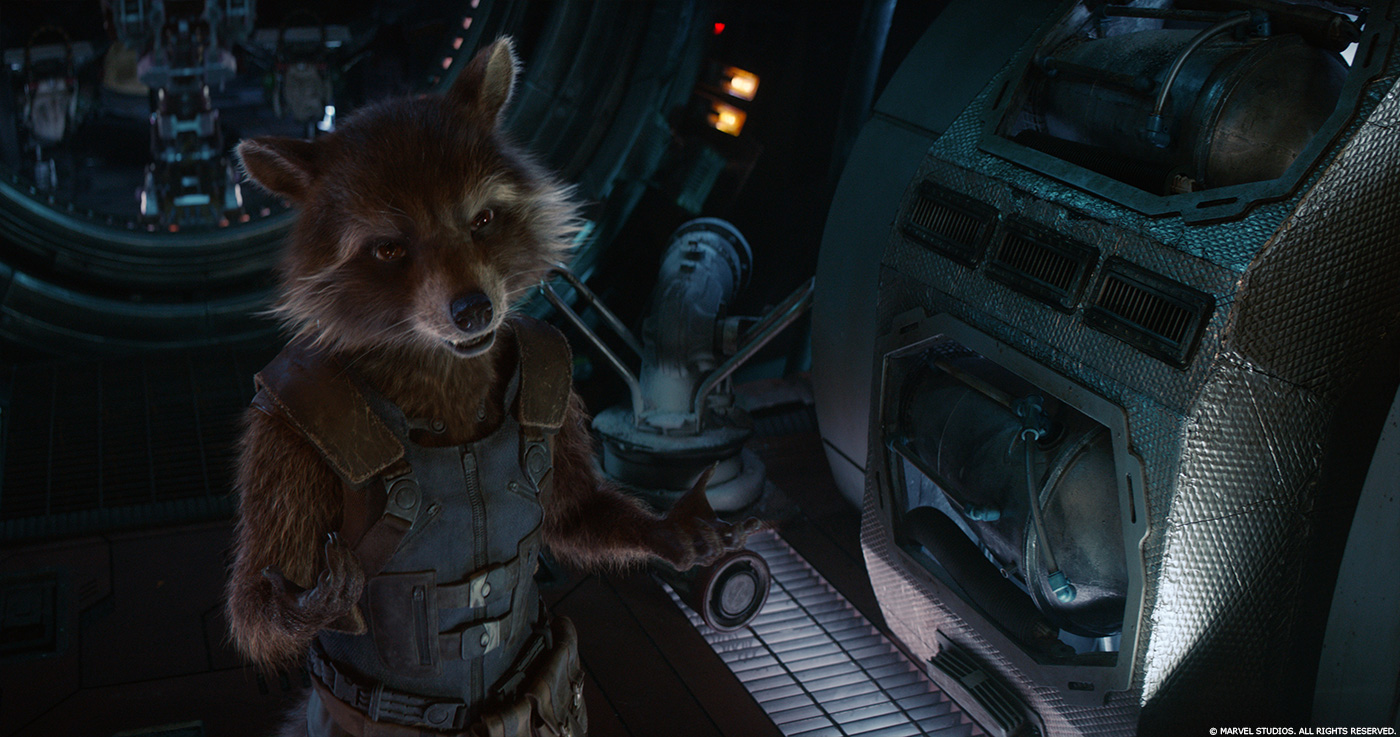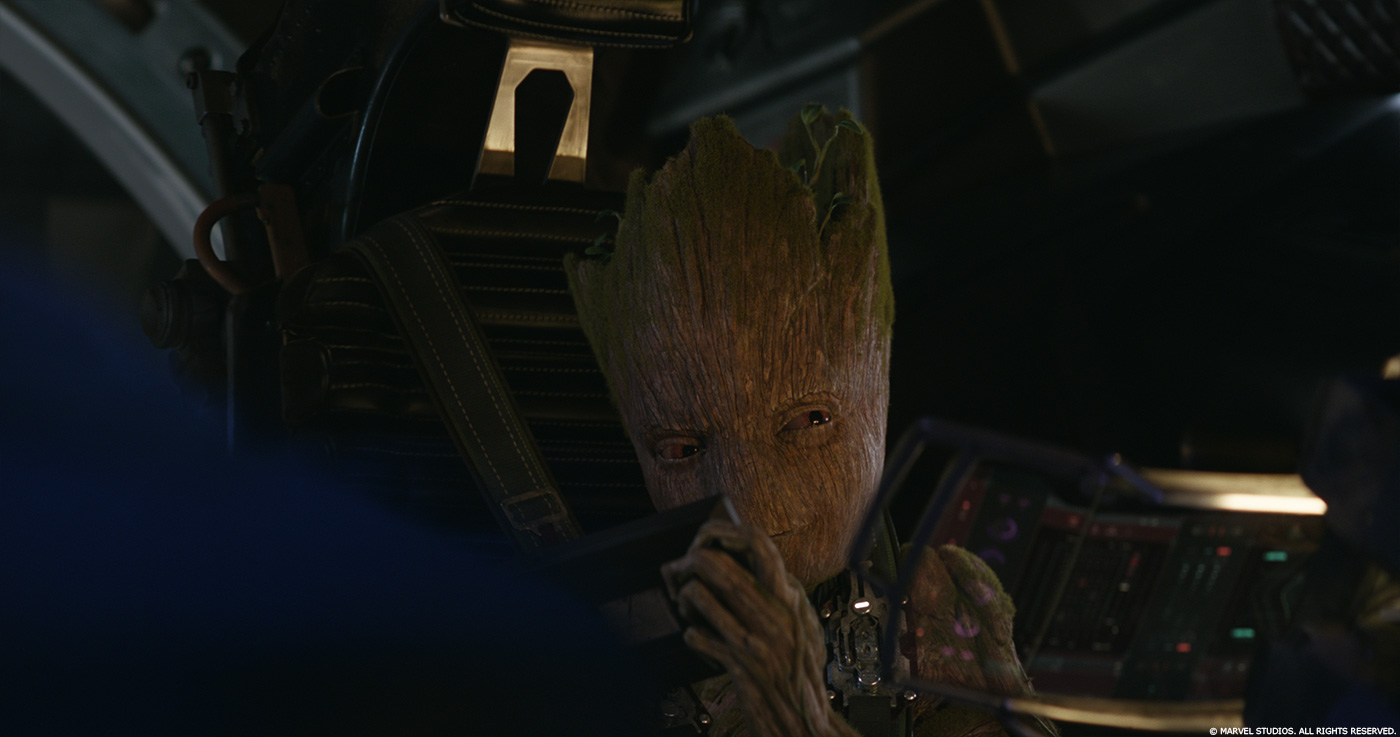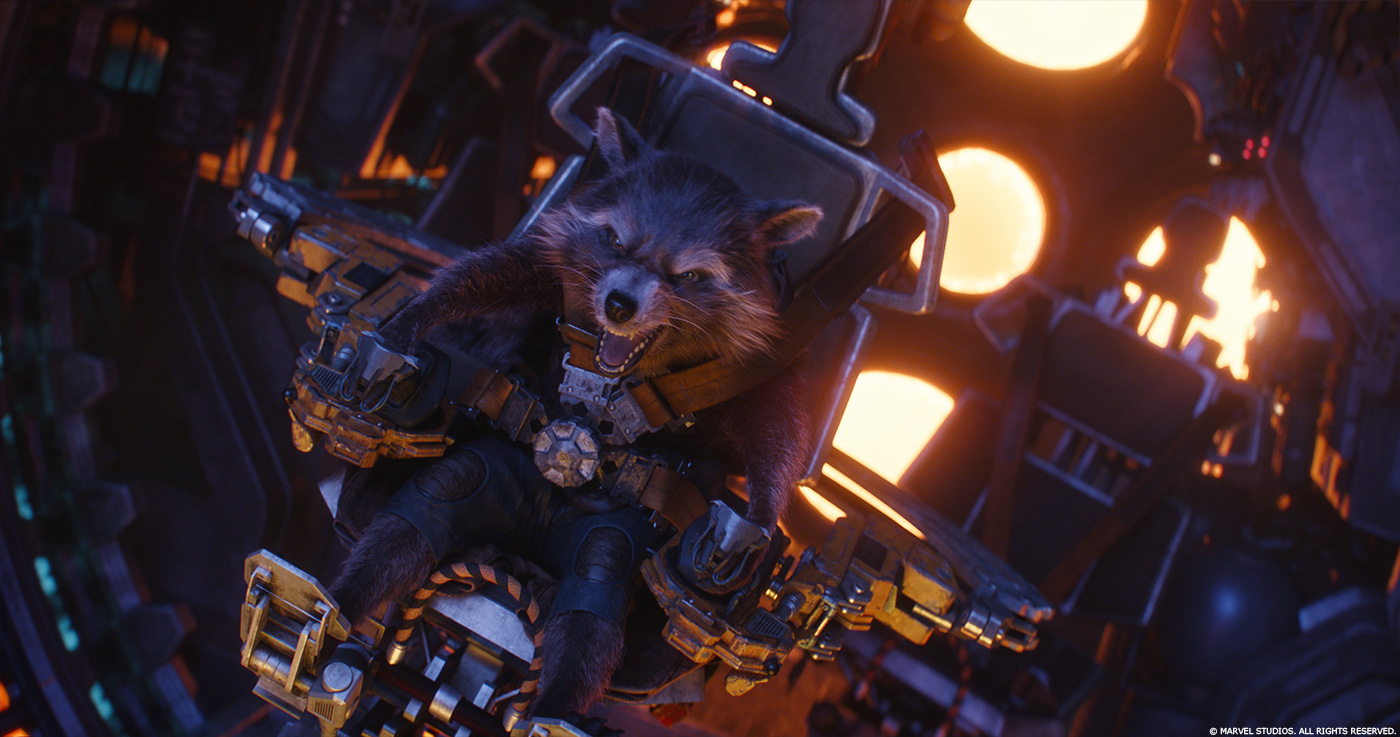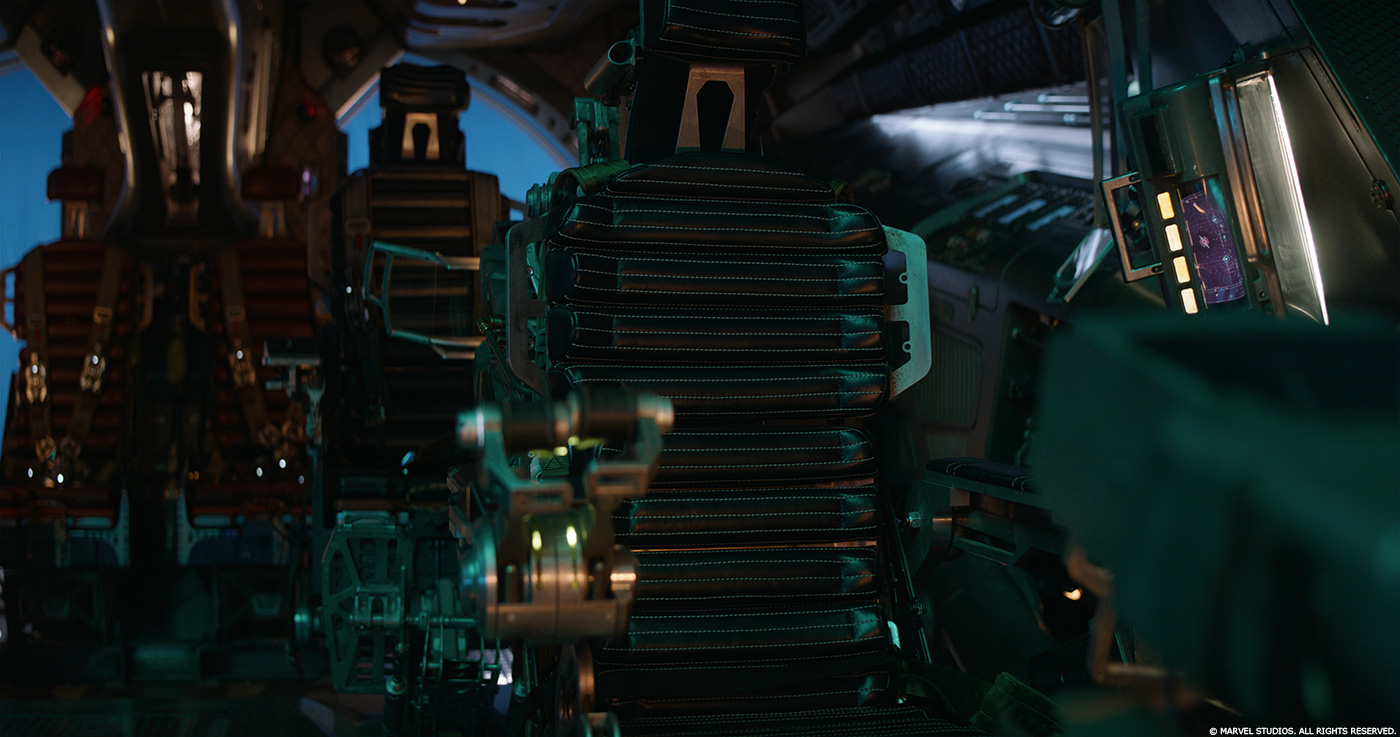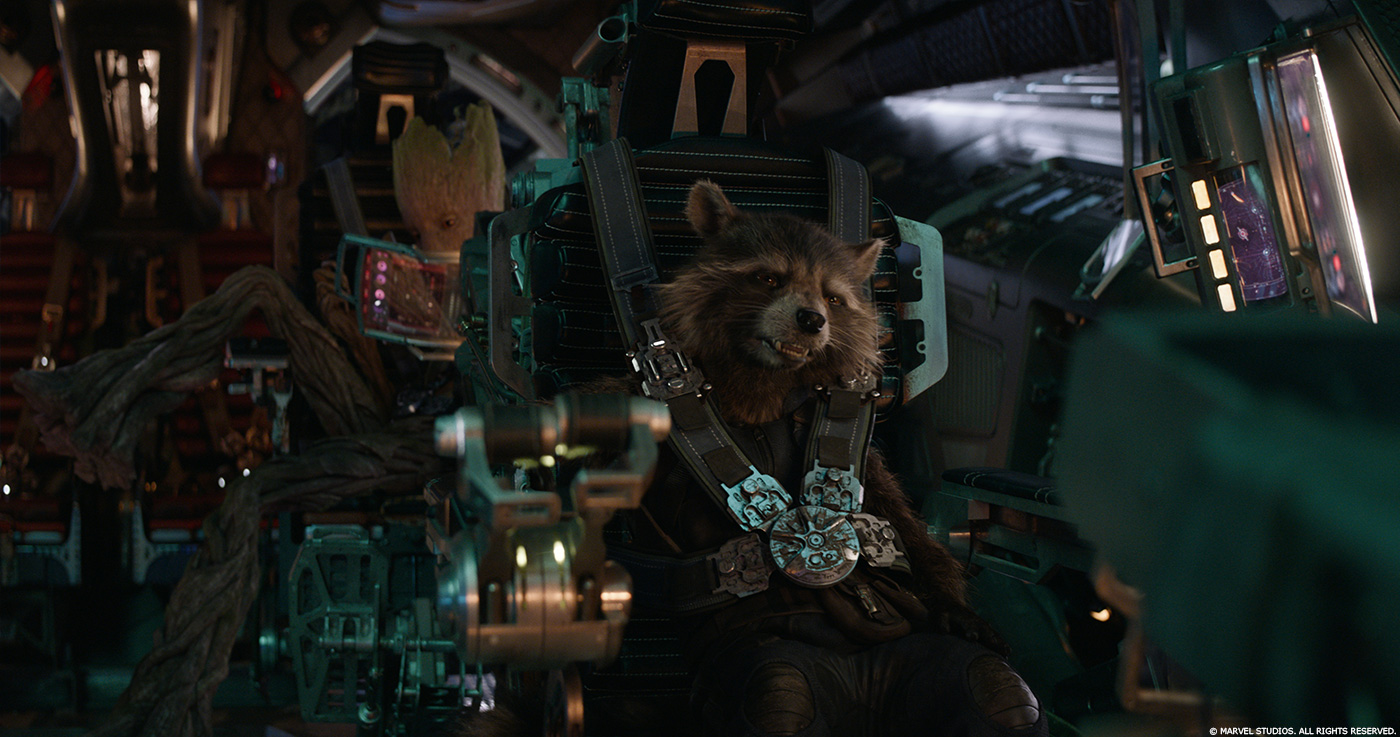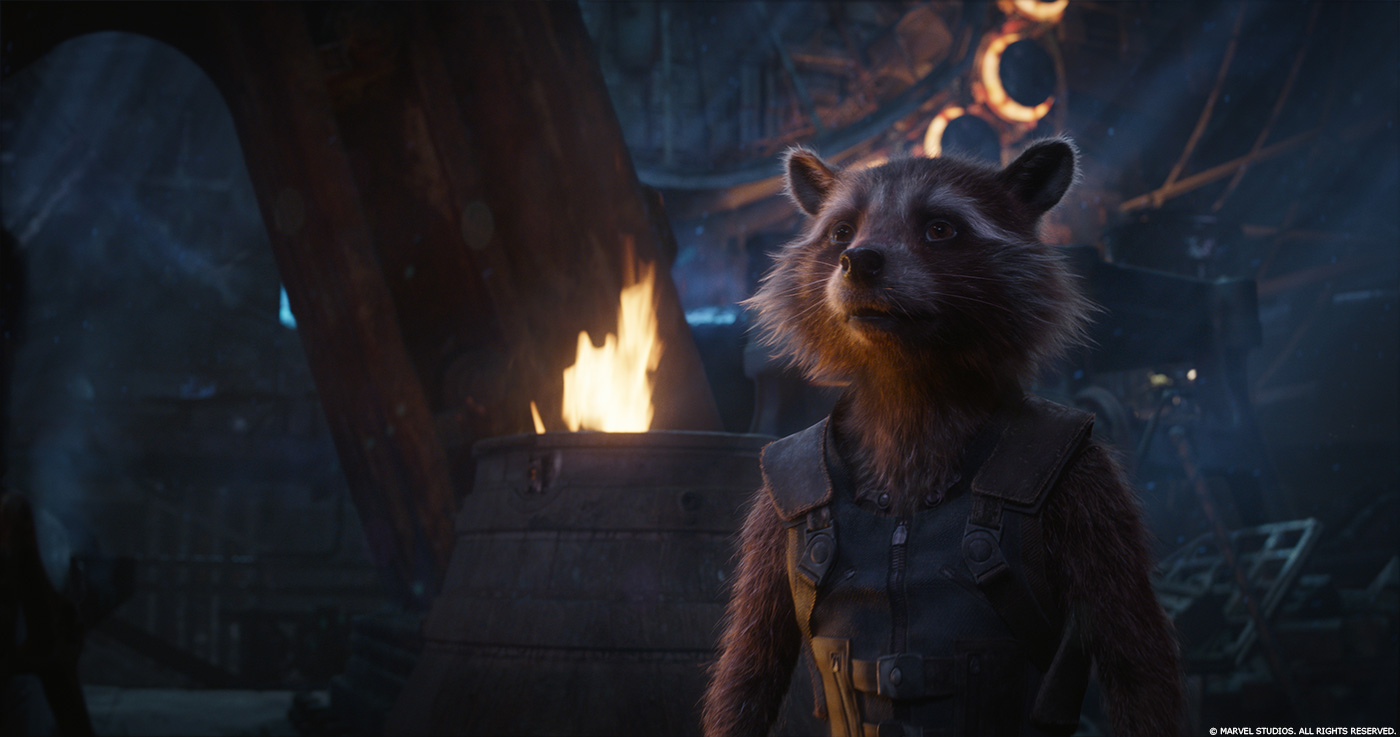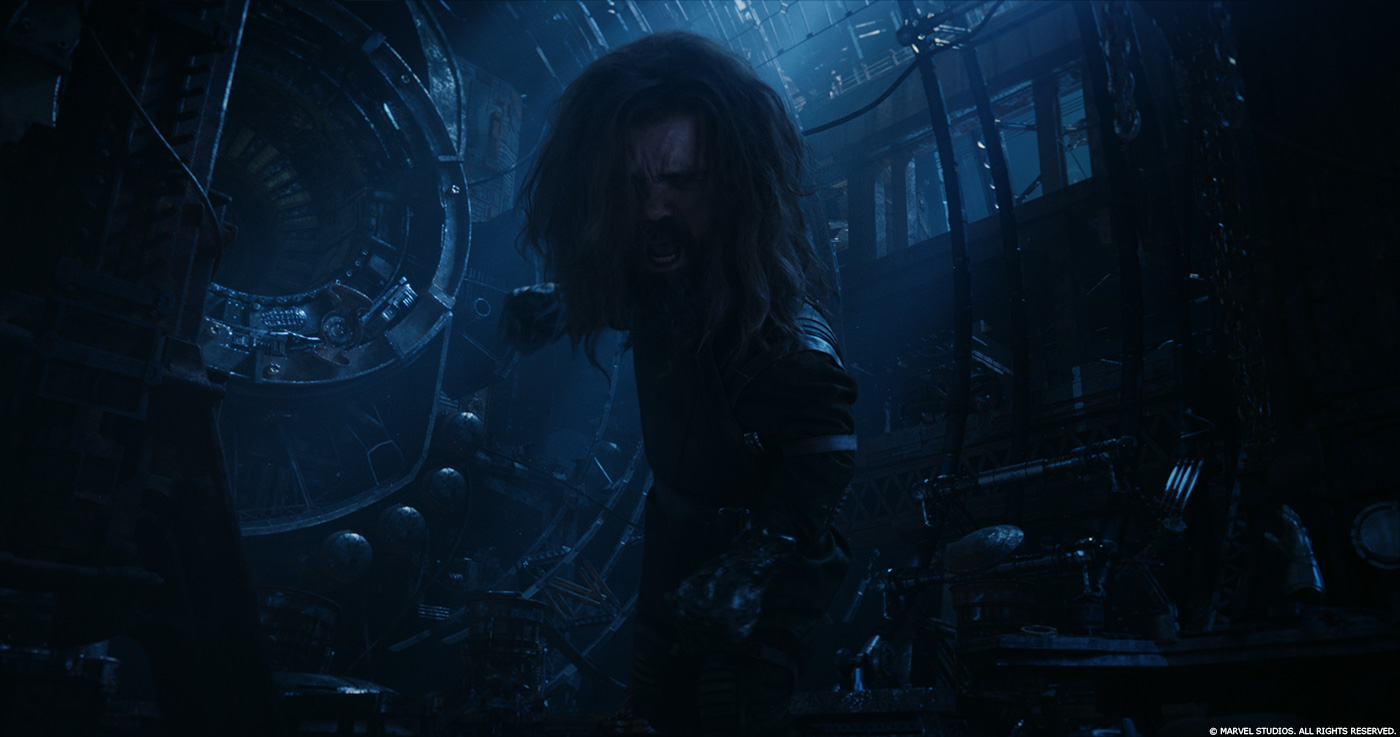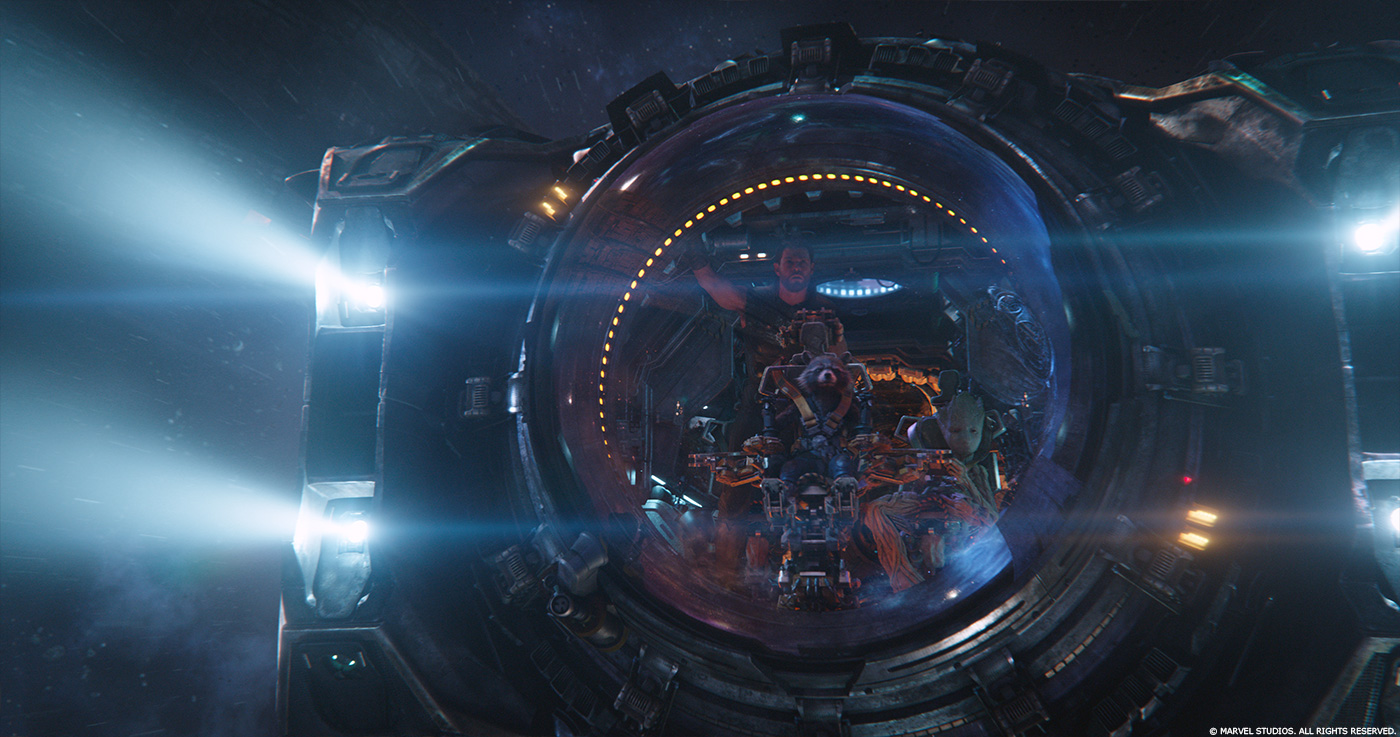Greg Steele began his visual effects career at Rhythm & Hues in 2004. He has worked on films such as NIGHT AT THE MUSEUM, THE INCREDIBLE HULK, X: FIRST CLASS and DJANGO UNCHAINED. He then joined Method Studios in 2013. He took care of the effects of films like GUARDIANS OF THE GALAXY, ANT-MAN, CAPTAIN AMERICA: CIVIL WAR, GHOST IN THE SHELL and GUARDIANS OF THE GALAXY VOL. 2.
How did you get involved on this show?
Our Method team was finishing up work on the final battle sequence in CAPTAIN AMERICA: CIVIL WAR for Dan DeLeeuw and Jen Underdahl when they started talking to us about potential involvement in AVENGERS: INFINITY WAR. We had an amazing experience working with them on that project, so of course we leapt at the opportunity to work with them again and be involved in such an epic film.
What was your feeling to be back on the MCU?
Method has been very fortunate to have worked on many of the Marvel films for the last 5 years. I’ve personally had the opportunity to collaborate on GUARDIANS OF THE GALAXY, ANT-MAN, CAPTAIN AMERICA: CIVIL WAR and now AVENGERS: INFINITY WAR. Each film has its own unique challenges and tone, but consistent among all of the Marvel creative teams is the overall goal of making the best film that can be made.
How was this new collaboration with directors Russo Brothers and VFX Supervisor Dan DeLeeuw?
Dan DeLeeuw was always our point of contact on the film. Dan would manage the process of determining what he, the Russo Brothers and the rest of the Marvel creative team needed the assets, shots and sequences to be. Both animation supervisor Keith Roberts and I have been fortunate to have worked with Dan many times over the years, and he has always been an incredibly creative, patient and experienced collaborator. I always walk away having learned an enormous amount on each project.
How did you organize the work with your VFX Producer?
Andy Foster was our producer, Julie Osborn our associate producer, and Luis Guevara our digital producer. Together, they kept the show scheduled and running smoothly.
Senior Animation Supervisor Keith Roberts, worked with Animation Supes Daniel Mizuguchi in VAN and Chris Perkowitz in LA, to lead two groups of character animators.
Our digital supervisor, Chris Kenny, looked after all technical aspects of the show, and Fernando Zorrilla was our asset supervisor, overseeing all of our character, prop, vehicle and environment builds with his multi-location team of artists. Pouyan Navid was our FX supervisor, managing all aspects of the effects work via his team of FX artists in both locations.
Because of the large number of shots and different environments, we broke the shot work up into three sequence teams headed up by Brandon Nelson, Pieter Van Houte and Kodie Mackenzie. These teams would take the shots to final, working with the animation, FX and asset teams.
How did you split the work amongst the Method Studios offices?
Between our Los Angeles and Vancouver offices, we designed the workflow to allow flexibility at the department level and could, for example, animate a shot in LA, run the character tech simulations and FX elements in VAN, and finish the lighting and comp in LA. The same was done for assets and allowed us to leverage the most appropriate artists for the tasks, no matter which city their desks were in. This allowed for a more unified team workflow and atmosphere.
What are the sequences made by Method Studios?
Our work followed the Rocket, Groot and Thor storyline from when the Guardians find Thor in deep space, Thor and Guardians’ interactions on the Guardians’ spaceship, the travel to Nidavellir in the escape pod, and ending in the set pieces that take place in the Nidavellir forge. Since we were the only vendor doing the Rocket and Groot aspects, we had some shared shots in Wakanda with ILM, DNEG and Digital Domain; we provided lighting pre-comps of the characters for the other vendors to add to the final comps.
Can you explain in detail about the design and the creation of Rocket and Groot?
For Rocket, we started with the asset we had used on GUARDIANS OF THE GALAXY VOL. 2 that was originally created by Framestore. Dan DeLeeuw didn’t want to change the character, but he wanted us to refine certain aspects where possible.
Adolescent Groot was designed by the Marvel art department for this film and a beautiful maquette was sculpted by Legacy Effects.
Can you tell us more about their rigging and animation?
Rigging/Techanim Supervisor Ryan Rogers and his team re-rigged Rocket based on animator feedback from the previous film, and also implemented a full body skin slide system that allowed for much more sophistication in the distribution of the skin over the musculature and bone structures. It also allowed the fur to move much more realistically when it was simulated. Extra attention was paid to the deformations around the eyes and implementing an improved corneal bulge deformation effect.
For Groot, scans were taken of the sculpt and we proceeded to build a production model. All of the vines were connected through his body and appendages so we could have separate vine distribution and slide between the vines as he moved. The original maquette had the plates covering his body in tight armor-like appearance, but it was requested to open up the gaps so he aligned more closely to his previous two incarnations (old and baby). For his face, we used a technique to hold certain sections or planks of his bark to different amounts of deformation, so as he spoke or emoted through his brows, there would be a subtle rigidity and slide between the different sections
Groot is now a teenager. What was the main challenge with this aspect?
Finding the right tone for Groot took some time. Editorially, his character and attitude was defined as much by his responses to others, as it was in the way Groot is treated by the rest of the team. Early on, he and Rocket had a more bickering back and forth interaction of a cranky emo teen and his frustrated parent; editorially eventually evolved that relationship into one where Rocket looks after Groot and is much softer in his approach with him. It made Groot a much more engaging character.
Did you received specific indications for teenager Groot?
Post-viz was done for most of the character shots in the film so editorial could work out the scene pacing and character beats before turning the shots over. Animation Supervisor Keith Roberts’ son, Quin, was 15 years old at the time and provided fantastic video reference that Dan DeLeeuw responded really well to. The drooped head, and long dangly arms of someone growing into their teenage body really captured the teen angst he was looking for. In shot production, we did some motion capture sessions with Quin and also based a good deal of the performances, both for Groot and Rocket, off animator reference we shot at the studio. Additionally, production had Sean Gunn and Terry Notary on set and in shots for character reference that we would also use to base the performance on.
How did you handle the fur of Rocket and the branches of Groot?
For Rocket’s fur, we switched to an XGen system based fully inside Maya. Simon Yuen, David Lo and Ilyoung Jeong built a workflow that allowed the character techanim team to stay in the same software for cloth and fur simulations and also allowed animation to do quick fur renders to check the deformation results of a furred Rocket vs. the traditional polygonal playblast representation.
All rendering happened in V-Ray and we spent extra time and effort to refine the fur shaders to get more of a natural specular response from the fur. We also went through all of the soft tissue aspects such as teeth, gums, nose and eyes to increase his realism.
Groot’s vines stretching out to form Stormbreaker’s handle were handled in rigging. The animation team was initially going to block out the movements with the intention of switching to an FX Houdini simulation once the motion was blocked in by them. But the animators did such a great job with the performance and timing of the growth, that we ended up just needing the FX Houdini artist to rework the surface to grow along the anim curve and create an age transition from green to brown vs. sliding down the curve as it was in anim.
How did you manage the lighting challenges with Rocket and Groot?
The on-set production team was very thorough in terms of capturing the information needed to accurately place characters in scenes. For every setup, they would capture clean plates, passes with character/prop stand-in reference, color charts, grey/silver balls and HDRI stills.
For the lighting on the show, CG Supervisor Brandon Nelson and Lighting TD Tadao Mihashi built a workflow in Nuke that allowed the lighting artists to draw rotoshapes around lights in the shot’s HDRI that they wanted to be isolated, then run a tool that would auto extract the isolated lights, clean up the HDRI and setup a lightrig in Maya with all of the extracted lighting images on cards in the correct orientation. Then, based on the lidar, they could then move the lights in depth to match the on-set lighting. It was a quick way to get an accurate starting place before going in and making artistic decisions.
Many of the shots on Nidavellir and when Rocket is alone in the escape pod were fully CG, so everything was rendered together to get accurate lighting and interaction.
The Guardians have a new ship. Can you tell us more about it?
We worked on two vehicles for the show. The large ship that the Guardians travel through the galaxy in, and a smaller escape pod that drops out of the belly of the main ship, and is used by Rocket, Groot and Thor to travel to Nidavellir and start up the Forge.
The Guardians’ ship and the escape pod were designed by production designer Charlie Wood and his Marvel art department team. They created beautiful artwork that explored the look and surfacing and also put together some rough models for general volumes and shapes. While we were in Atlanta filming the Nidavellir sequence, Dan and Jen arranged for us to spend some time with Charlie in the art department to go through many of the vehicles, and environments they had designed for the show. It was an excellent opportunity to discuss shape, visual language, material properties, histories, and areas that they wanted us to expand on for the final assets.
On set, the Guardians’ ship was broken into two sections: a two story flight deck mounted on a gimbal for slight movement and vibration, and a galley section where the majority of Thor’s interaction with the Guardians takes place. As the two sections couldn’t be connected because of the gimbaled flight deck height off the ground, we merged the two sections via 2.5D set extensions based on photography projected on accurate geometry. Our Art Director, Ming Pan, came up with beautiful designs for the nebulas and distant space environments across all of our sequences that Chris Sanchez, our matte painter, refined and broke into layers for the comp teams.
How did you created this ship?
Not all aspects or angles were fully fleshed out, so our Art Director Ming Pan would do paint-overs to develop what needed to be built and how things could work, making sure everything stayed true to the original design and visual language. Asset Supervisor Fernando Zorrilla worked with modeling, texture, rigging and lookdev to prepare the assets for shots and sharing with other vendors. A massive effort went into building all of the individual paneling to get the correct oil-canning effect similar to a WW2 warbird, aging the surfaces and giving everything a history, and working out the mechanics of the engines, wing pivot connections and all of the other geometric details that would hold up in both wide shots and two feet away from the surface.
What was your approach for the shots featuring Eitri interacting with Thor?
On set, a section of the forge surrounded by a massive bluescreen was built to shoot as many of the Thor, Rocket and Groot plates as possible. It also allowed the staging of Eitri and Thor’s interactions. For those shots, because of time challenges with the talent, the directors were willing to restrict themselves to nodal camera moves, which would allow us to quickly move through fairly simple forced perspective setups of the A and B sides of the shot. We would shoot the A side with Thor, then in the same place on set and in the same lighting conditions, we would bring in some portable bluescreens and shoot the Eitri plate, accounting for the scale differences by scaling down the camera relationship to the origin point that Eitri was standing on. For wide shots of the characters moving through the environment with Thor, we used a digi-double of Eitri so we had more flexibility with the camera motion.
How did you design and create the huge environment of Nidavellir?
Nidavellir was our largest asset build on the show. It is a massive space station buried in a deep corner of space surrounded by gaseous nebulas and asteroid fields. The challenges revolved around building an environment that could be easily animated or posed per shot, having enough detail that we could be a foot from the ring surface and also pull out and across long distances and still retain the sense of scale and detail necessary, and in the end be efficient enough to render in many shots.
The Marvel art department had provided beautiful concept designs that we needed to combine together and really define what the surface looked like up close vs. far away. Amazing detail closeup tended to look like noise from further distances, so we really needed to balance the relationships of the shapes and have an almost recursive fractal quality to the surfaces.
To build the surfaces and structure, we used a V-Ray proxy geometry method that utilized efficient memory handling and rendertime optimizations. Atomic pieces were bundled together to create larger logical shapes and areas. We chose to build the modules by hand vs. procedurally as it afforded a more aesthetically driven and logical layout of the parts. These modules were then replicated procedurally through the ring structures to avoid repeating patterns.
At the shot stage, any of the modules could be adjusted, and all the parts down to the atomic level could be manipulated and rearranged as the shot composition called for. Animation and lighting would never need to see the high resolution geometry, as it was represented by lo res geo and would only get called at rendertime.
Thor is restarting the dying star and the forge. How did you create this stellar FX?
Animation worked with our layout lead, Juan Colon, to build a geographical coherence across the sequence. Where characters were on the rings, the continuity of the rings spinning, and the spatial relationships took a good deal of effort and organization, especially as the edit was evolving and things needed to hook up.
FX Supervisor Pouyan Navid and his team crafted an enormous amount of element passes for the sequence teams in this part of the story: the massive blue/purple emission of the dyson gasses, the beams and energy blasting Thor as he holds the dyson sphere doors open, the nebulas and floating ice particulate, escape pod thrusters, crucible fire, melting uru, solar winds, steam and blue space particulate in the forge. All of the simulations and volumetric rendering was done in Houdini and in some cases, such as the melting uru metal and floating ice and asteroid chunks, data was passed back to the lighting team for V-Ray rendering.
Thor gets burned really hard. How did you enhanced his wounds?
On set, Chris Hemsworth had a base of makeup applied, but we ended up substantially enhancing it to give him a much crispier look that would support his dying state at that point in the story. We needed to create more burn coverage, skin blistering and suit damage/hot embers augmentation. This was accomplished by projecting painted elements on 3D matchmoves and also using smart vectors in Nuke to track and warp the material to his skin and body shapes. Effects smoke simulations and practical smoke/steam elements were added to give him that “fresh out of the bbq” quality.
Which sequence or shot was the most complicated to create and why?
During the sequence in which the hero characters are trying to get Nidavellir’s ice encrusted rings to move, Thor is dragged along the surface of one of the rings by Rocket in the escape pod. Across several shots, Thor tears through the high tech solar panels and machinery, creating a rooster tail of zero-G debris and ice until he is able to grab hold at the edge. The shots involved a digi-double, long stretches of unique Nidavellir surface level detail, tearing metal simulations and destruction, atmospherics, sparks, etc.
Is there something specific that gives you some really short nights?
When we started on the project, it was necessary to get up to speed extremely quickly as we needed to complete a part of the sequence where the Guardians meet Thor for the Disney D23 event and Comic-Con. It required us to build and develop adolescent Groot, the Guardians’ spaceship, the look of jump space and exiting it, and the debris field wreckage of Thor’s ship all in a very short time period. It was a real race to the unveiling deadline, but the team did an amazing job in pulling everything together, and it really kicked the show off for us in a high gear.
What is your favorite shot or sequence?
The arrival of Thor, Rocket and Groot in the escape pod to the Nidavellir space station. It contained wide expansive space vistas with some closeup shots of the rings, dyson sphere and forge that showed off some of the incredibly detailed work the asset team created. That, combined with the atmospheric lighting, FX and compositing the sequence team merged together, created a very moody and mysterious introduction to Eitri’s Nidavellir forge.
What is your best memory on this show?
My best memory would be working with our incredible multi-location team based in Vancouver and Los Angeles. Our Method production team, supervisors and artists put everything they had into the work and strove to create the best imagery possible for the sequences.
Additionally, the positive reaction people have had to the finished film. It’s a real testament to the artistry, skill and creativity of the filmmakers and all of the visual effects vendors involved.
How long have you worked on this show?
June 2017 to April 2018 – about 10 months.
What’s the VFX shots count?
410 shots.
What was the size of your team?
Around 220 people, including supervisors, artists, and support staff.
A big thanks for your time.
// WANT TO KNOW MORE?
Method Studios: Dedicated page about AVENGERS: INFINITY WAR on Method Studios website.
© Vincent Frei – The Art of VFX – 2018


